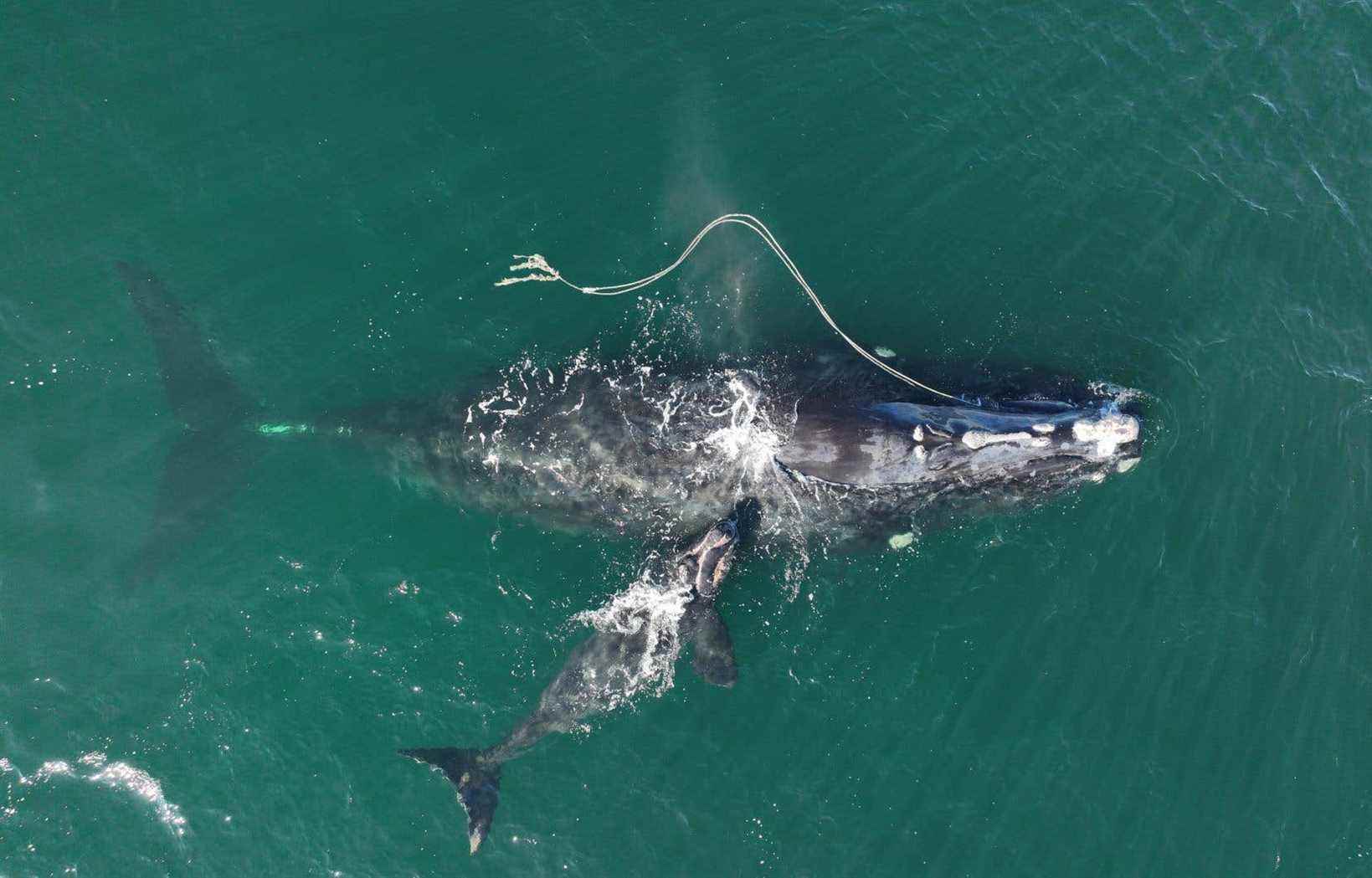The birthing season has just started for the North Atlantic right whales, a species on the verge of extinction which increasingly frequents the waters of the Gulf of St. Lawrence and which is the subject of protection measures without previous here and in the United States. Despite this, the population decline has accelerated in recent years.
The female named “Snow Cone”, 16 years old, symbolizes these days the main survival issues facing right whales: collisions with ships and entanglements in fishing gear. She has just given birth near the coast of the US state of Georgia. She also had a calf last year, but it was fatally struck and mutilated by a boat propeller near the coast of New Jersey.
Snow Cone is also known to Canadian researchers, in particular because it was seen last summer in the Gulf of St. Lawrence, entangled in a fishing gear. Despite attempts to free her, she left with ropes caught in her mouth. According to information released Friday the US Oceanic and Atmospheric Observation Agency (NOAA), it is also still partially entangled.
Few births
The birth of Snow Cone’s calf is the second reported this year for the species, which now numbers just 336 individuals, according to data released in October. In this context, each new calf is good news for American and Canadian scientists who study this population known to live near the coast. Female right whales usually give birth to their calves between late November and early March, mostly off the coasts of the states of Georgia and Florida.
According to the North Atlantic Right Whale Consortium (NARWC), however, the reproduction rate has declined markedly in recent years, so much so that “the low births each year have eliminated the ability of the population to grow and cope with the mortality caused. by humans ”.
Last year, 17 calves were born, but two quickly died. For the 2019-2020 birthing season, experts had identified a dozen calves. This figure was below the average for recent years, with the exception of the 2017-2018 season, during which no calves were born. Over the 2007-2017 period, the annual average was 18 calves, with peaks of 22 in 2013, 22 in 2011 and 39 in 2009.
“Many females may be unable to accumulate enough fat to successfully become pregnant or carry a pregnancy to term due to possible reductions in food availability and increased effort to find food,” according to the NARWC.
For their part, researchers at the New England Aquarium believe that it is possible, in some cases, that females who have experienced entanglement in fishing gear may not be able to reproduce, due to the significant impact on their condition. physical. More than 80% of the adults of the species bear entanglement marks.
The efforts of the last decades had, however, shown that it was possible to increase the population. There were only 275 individuals in the early 1990s. But thanks to significant protective measures put in place in American waters, including changes to shipping routes, rules for commercial fishing and a surveillance system, the population had reached 500 individuals in 2010.
Record mortalities
In addition to the low birth rate, right whales have suffered record mortalities in recent years. In 2017, no less than 17 adult individuals were found dead, including 12 in Canadian waters. A total of 10 right whales died in 2019, including a female who had become entangled at least four times in 15 years.
This year, however, the Canadian government has not recorded any mortality in the St.Lawrence, as part of the unprecedented monitoring operations that have been carried out since 2018 to protect these cetaceans.
These safeguards, which include vessel speed limits and the closure of fishing grounds, are essential to protect access to a vital US market for fishermen, including snow crab and lobster. There is indeed legislation in the United States that allows the country to “ban imports” of fishery products if the industry endangers marine mammals.
Everything indicates that more and more right whales are frequenting the Gulf of St. Lawrence, from spring to fall, after having largely deserted areas such as the Bay of Fundy. This phenomenon could be linked to global warming, which changes the distribution of food.
According to a new study led by scientists from Canada and the United States, the Gulf of St. Lawrence is now “important habitat” for more than 40% of the entire North Atlantic right whale population.
